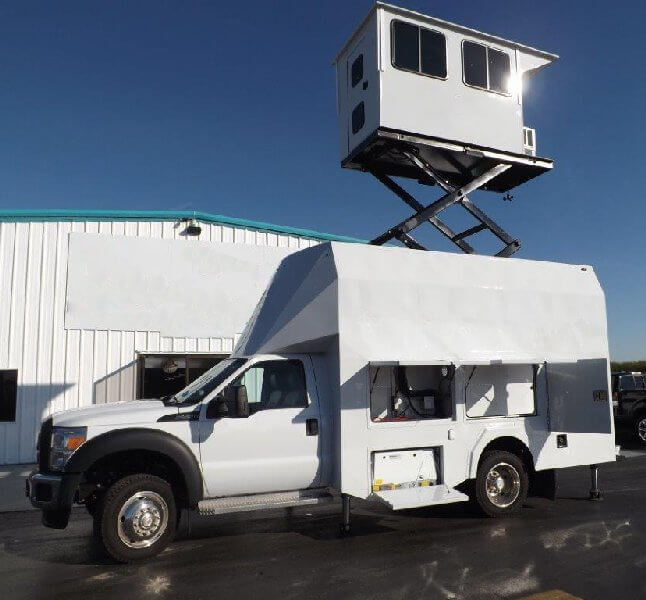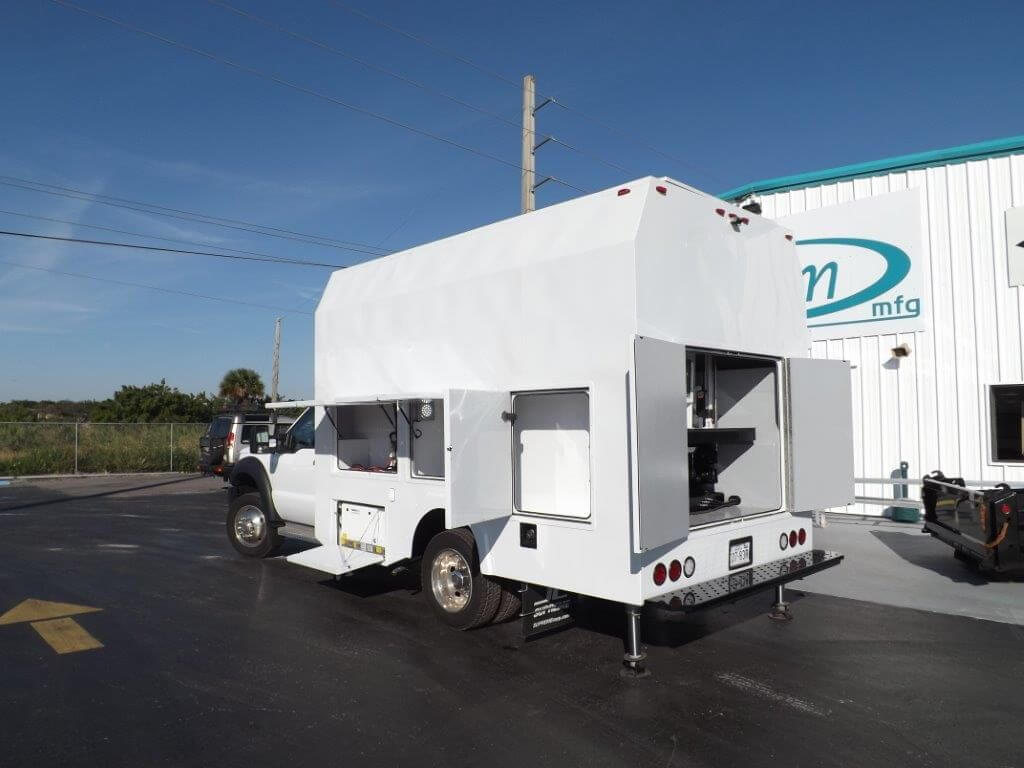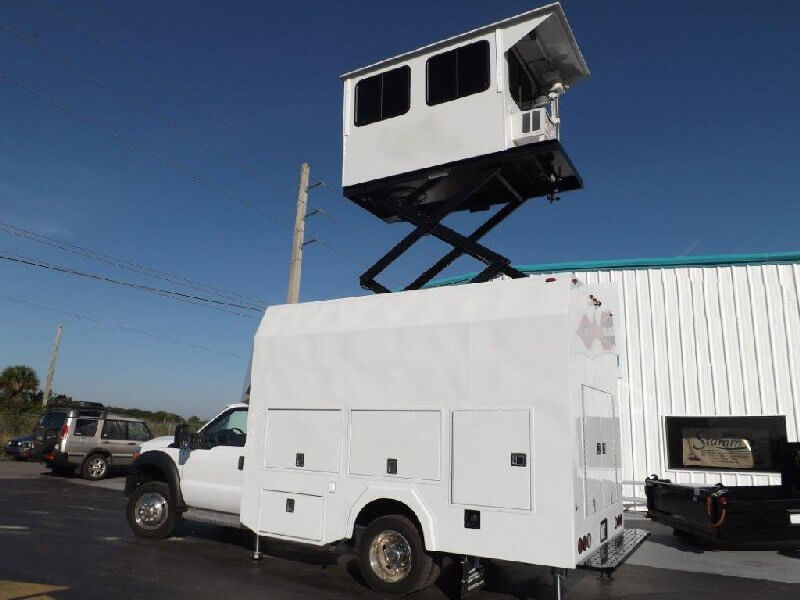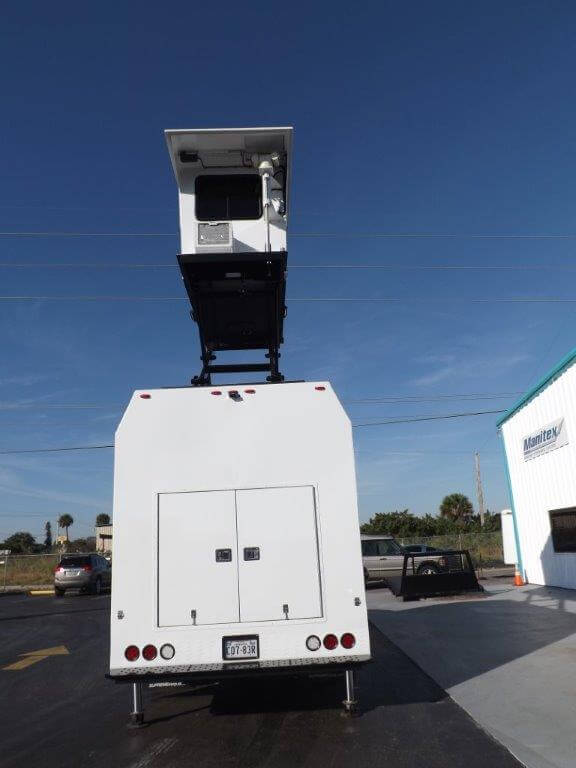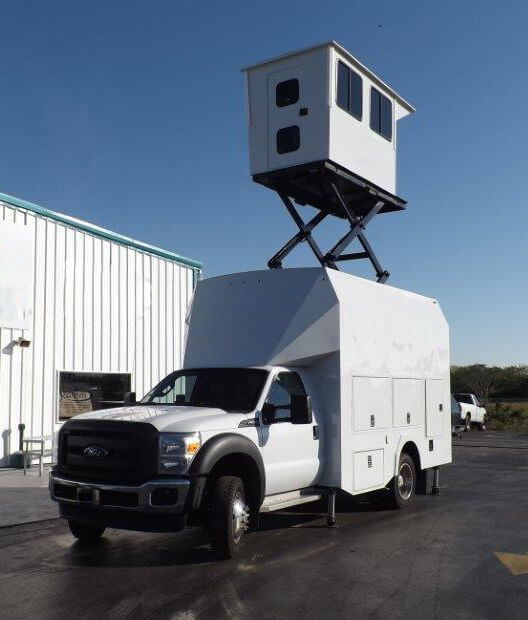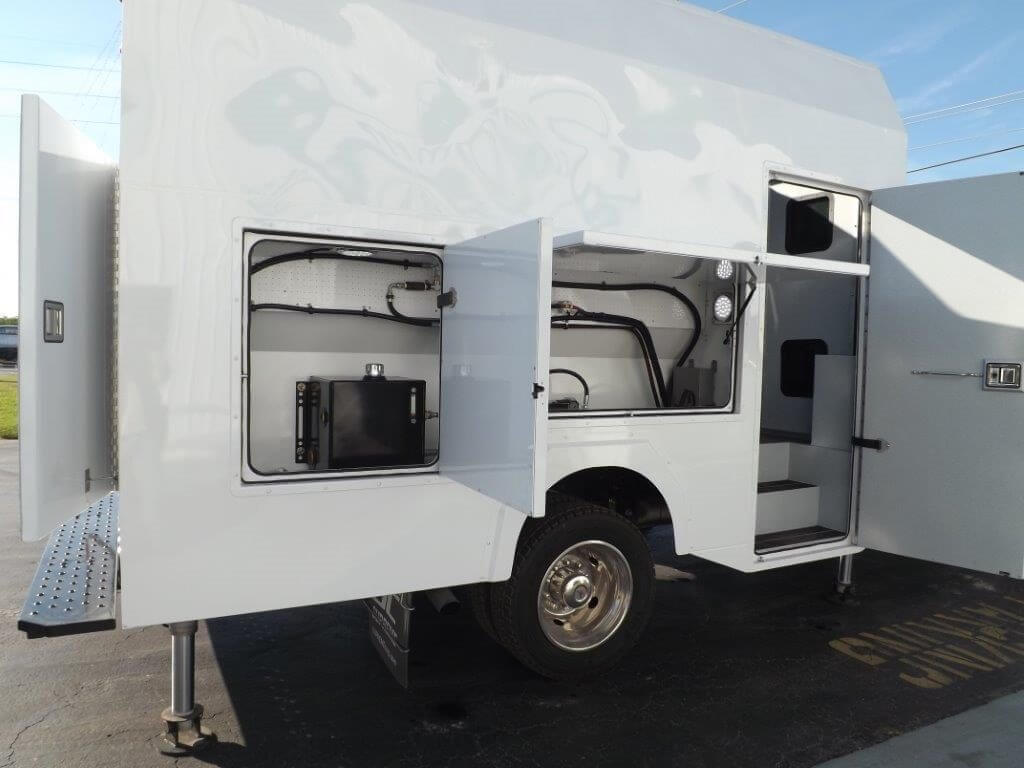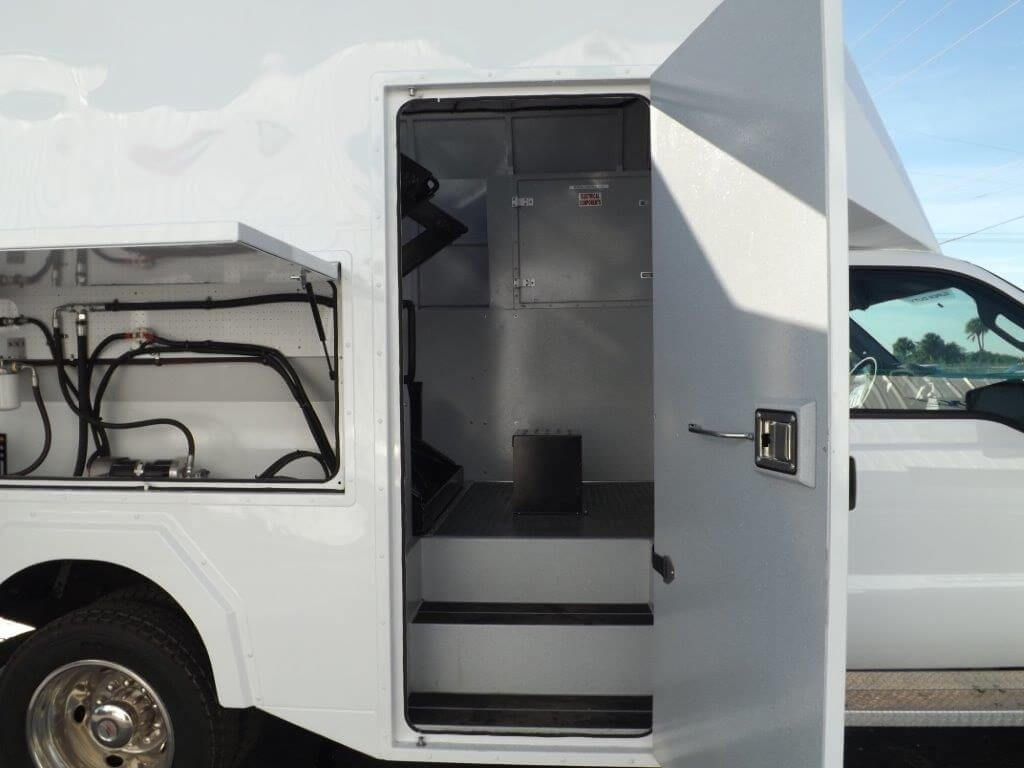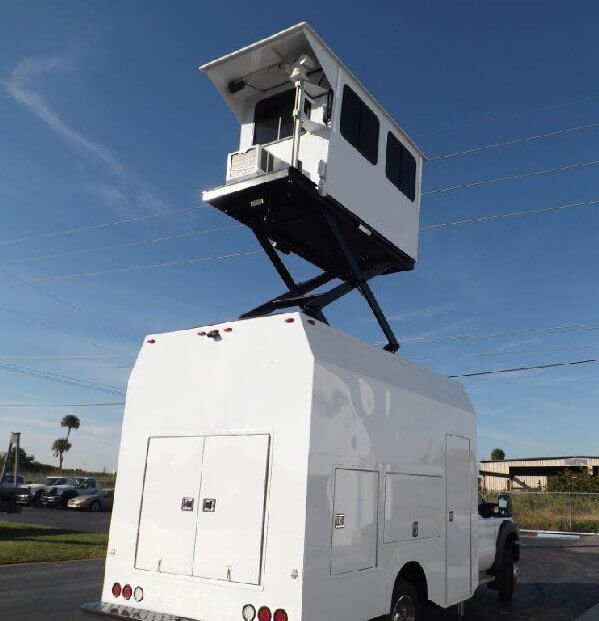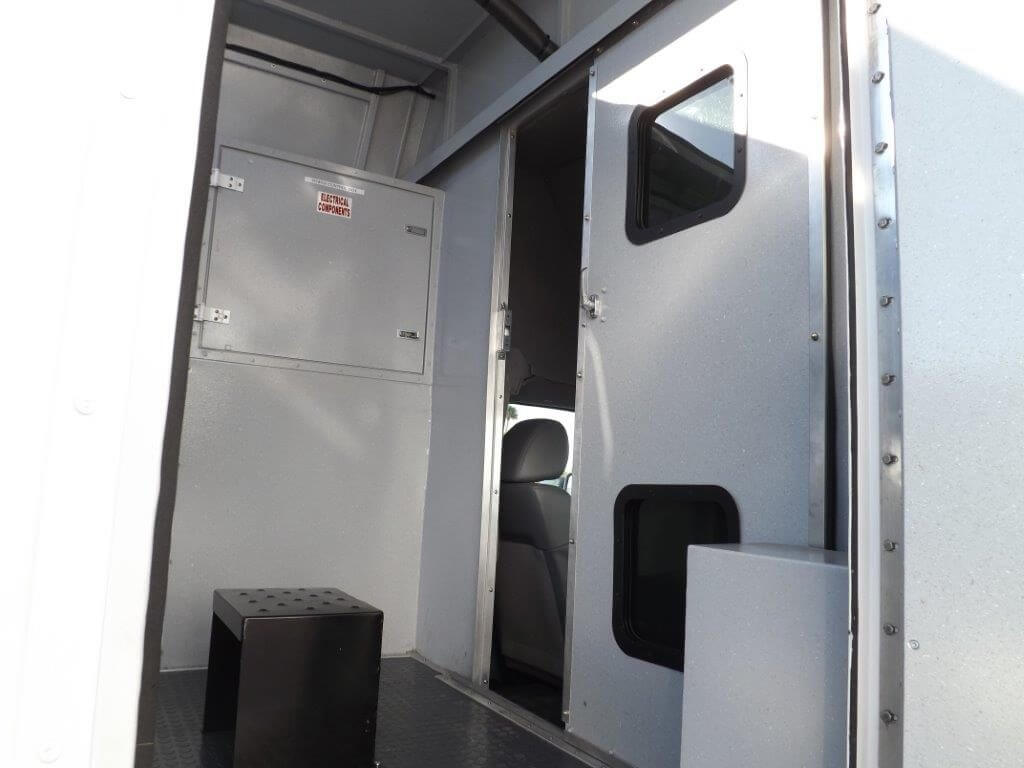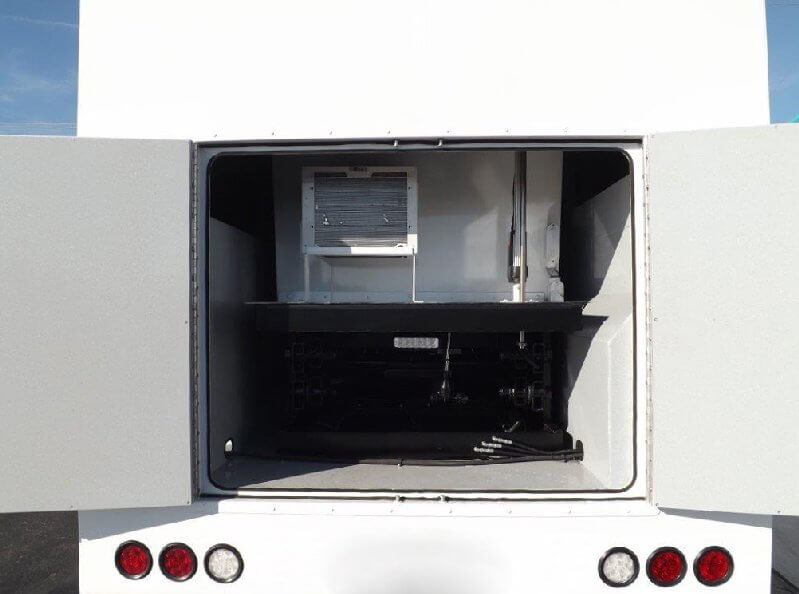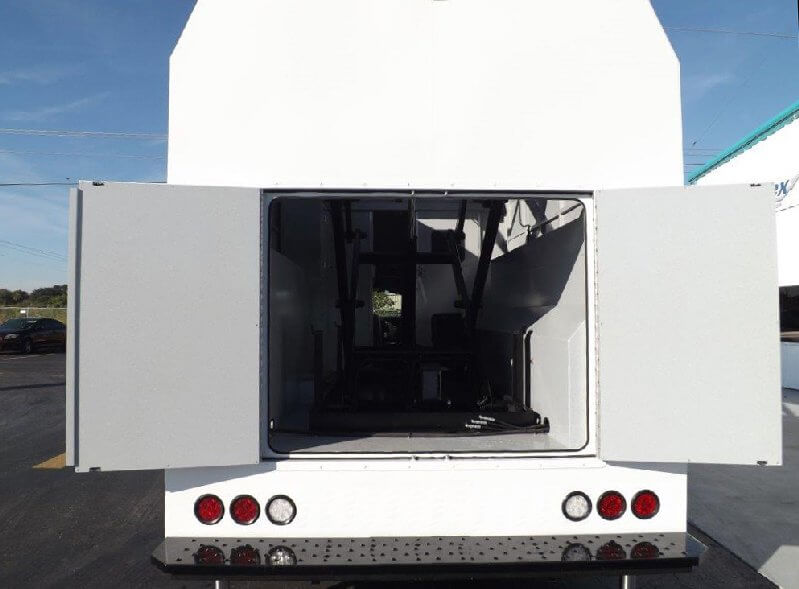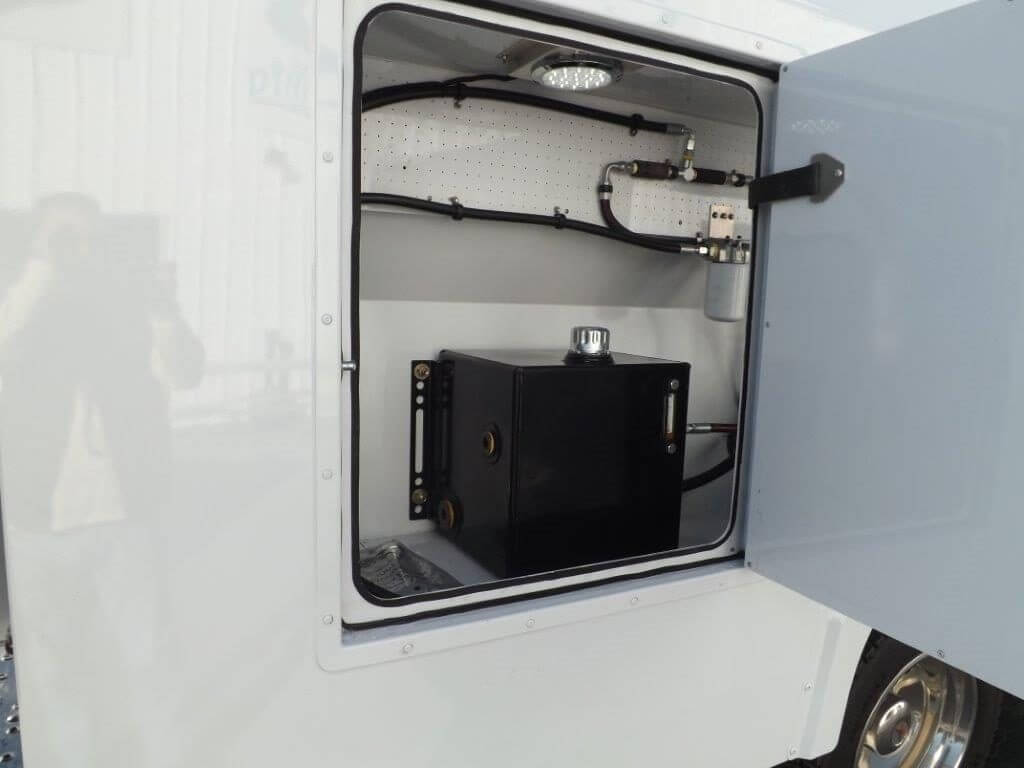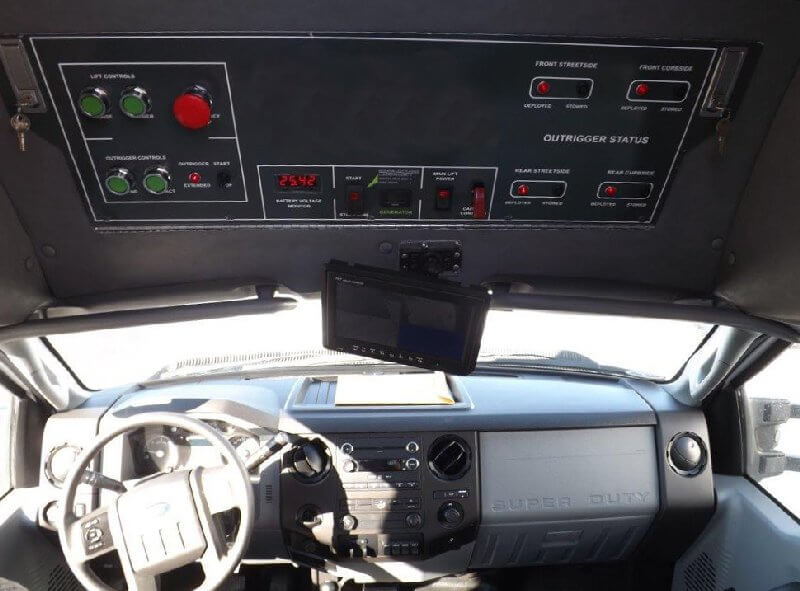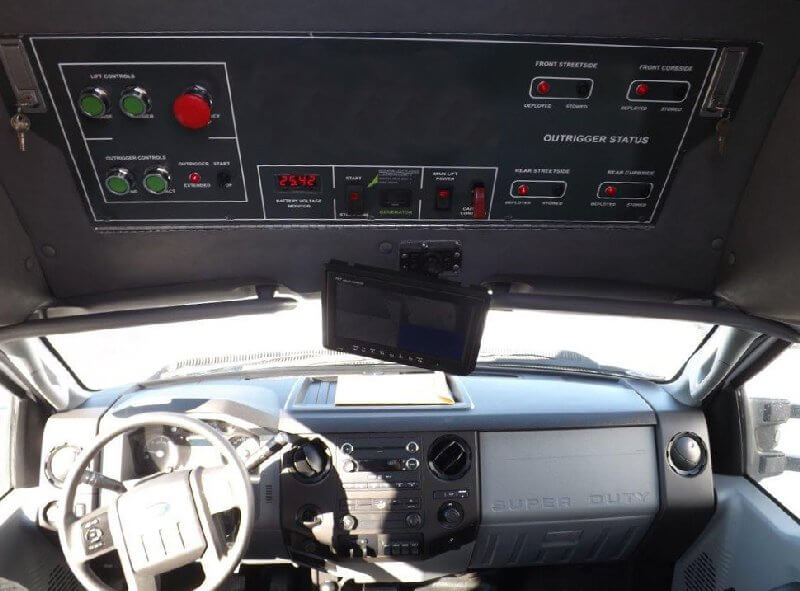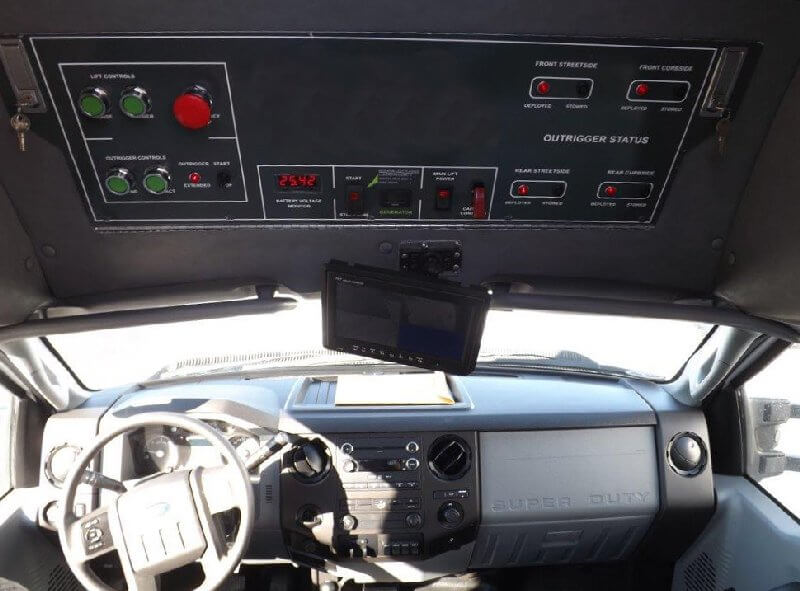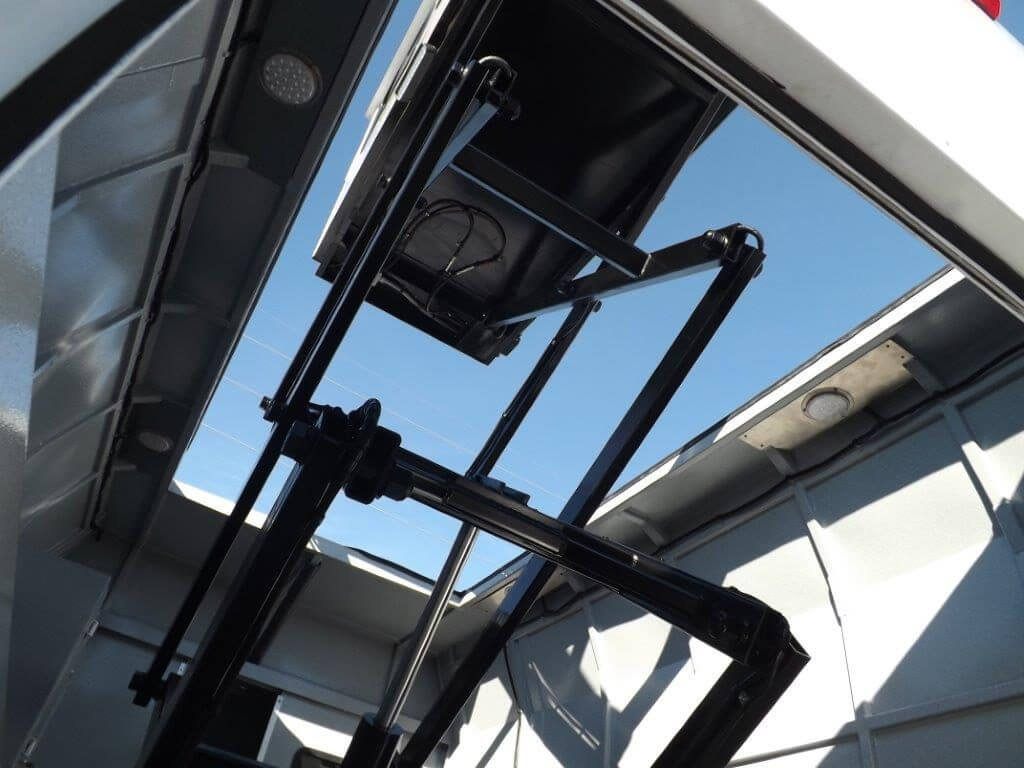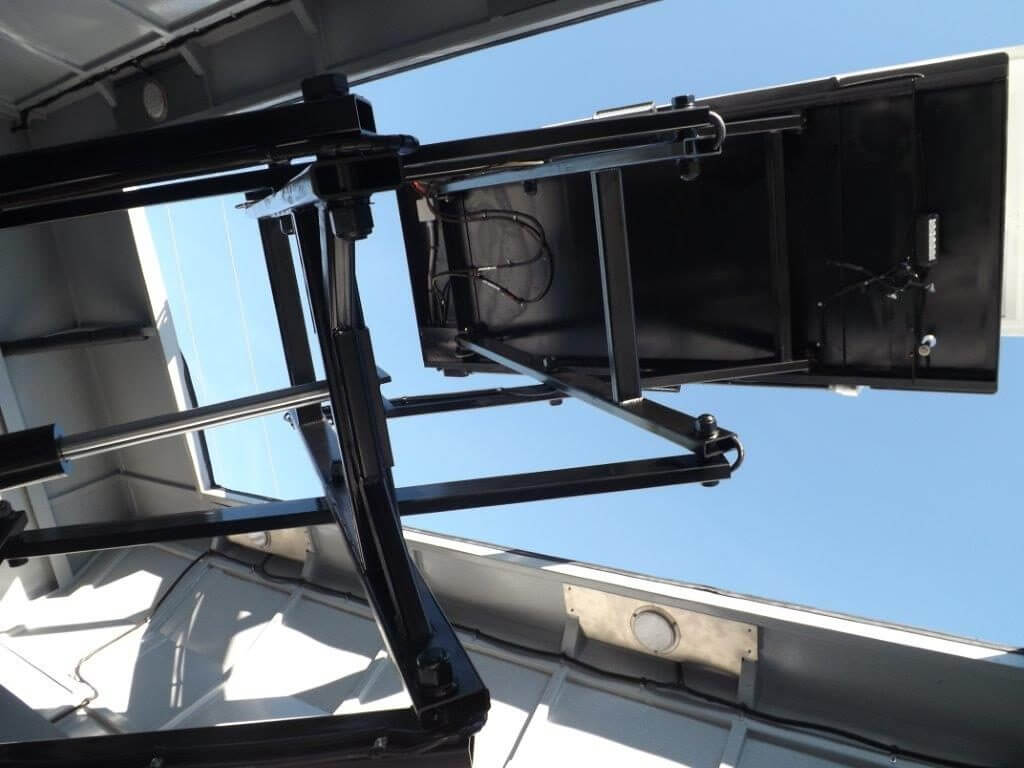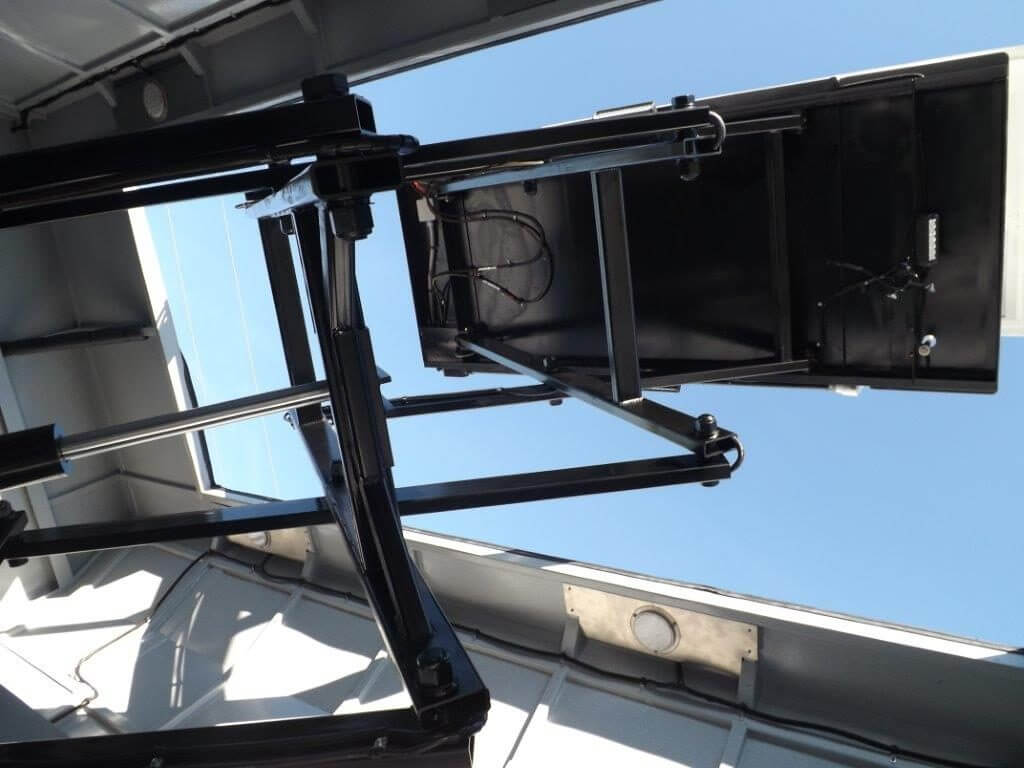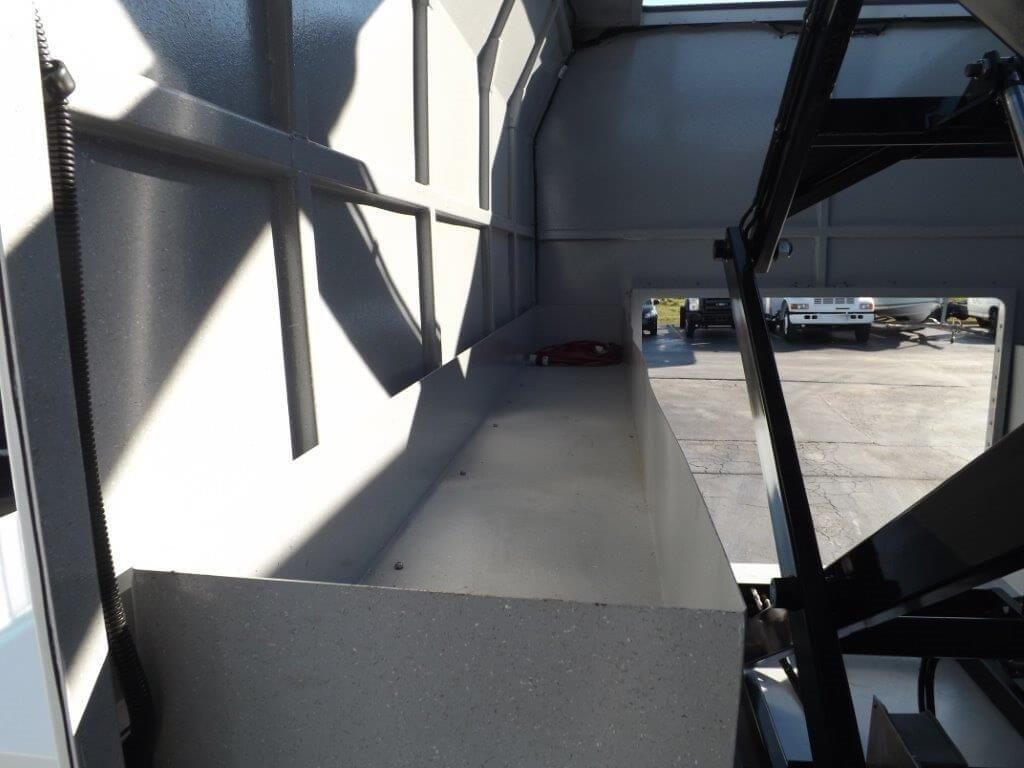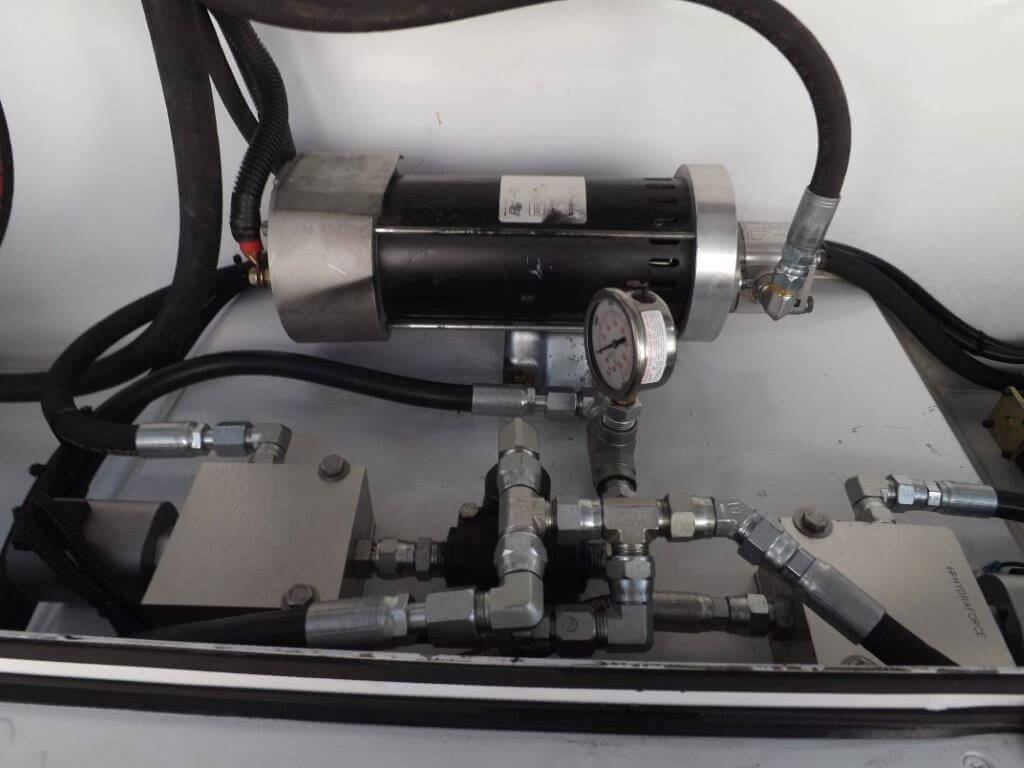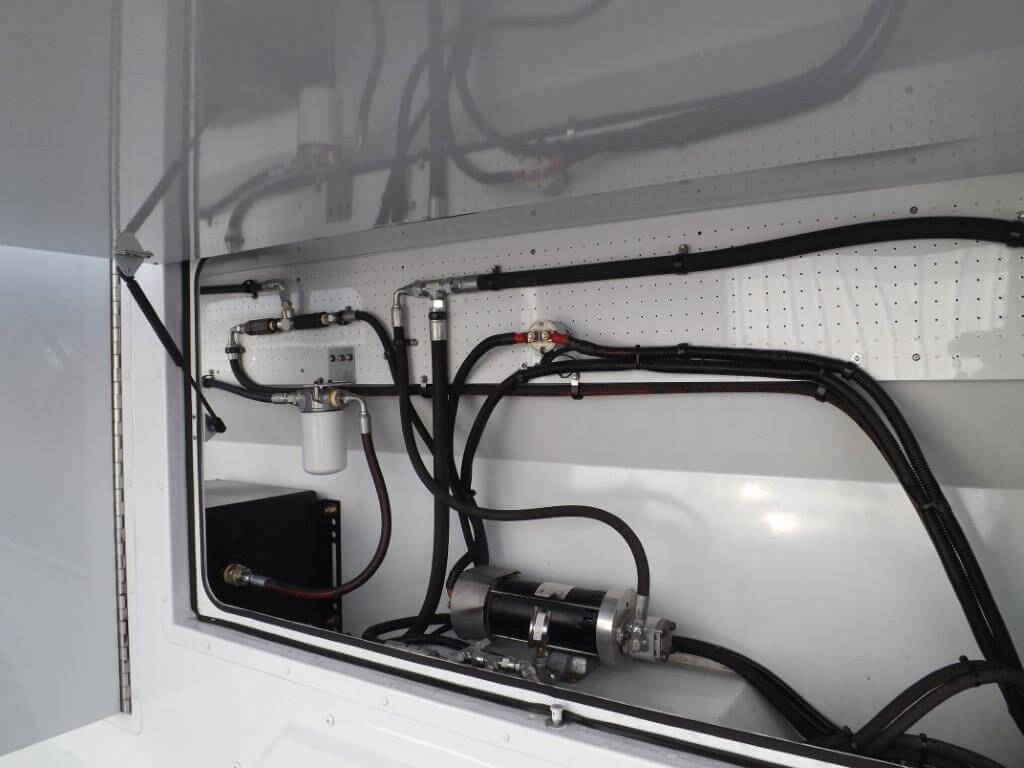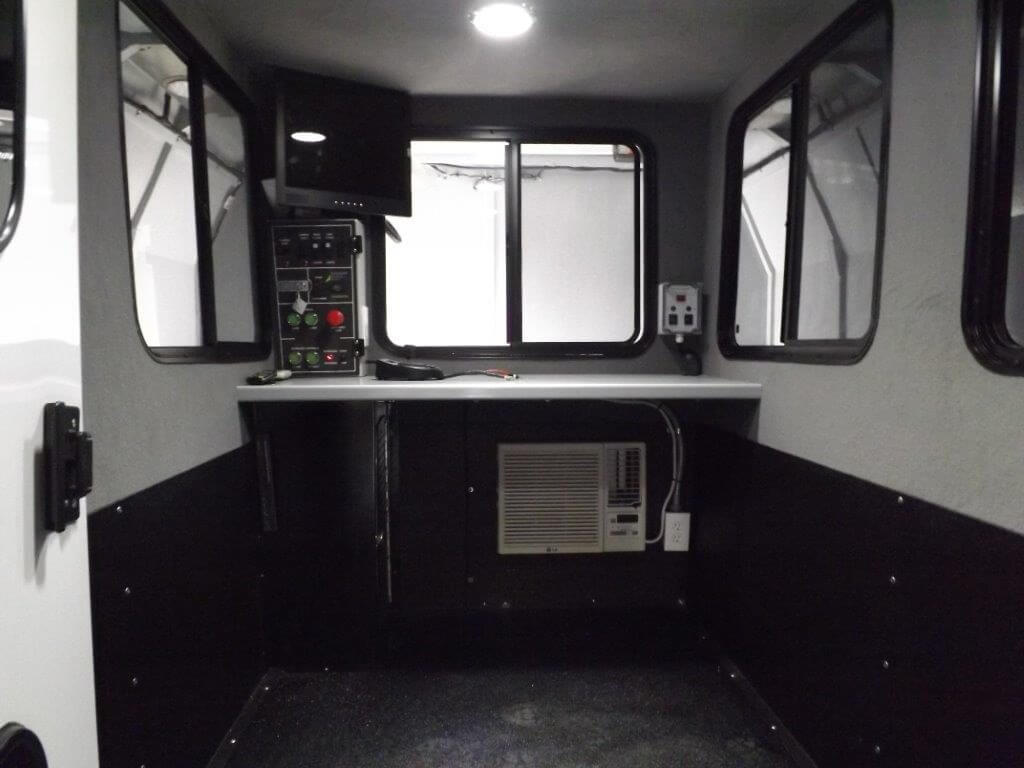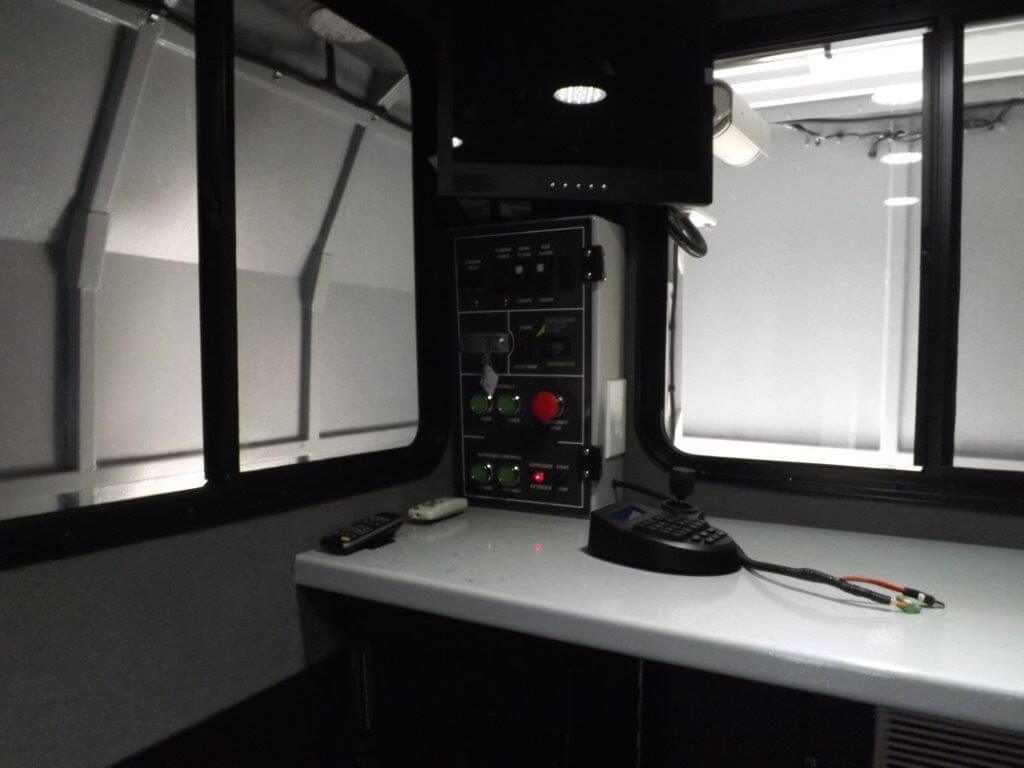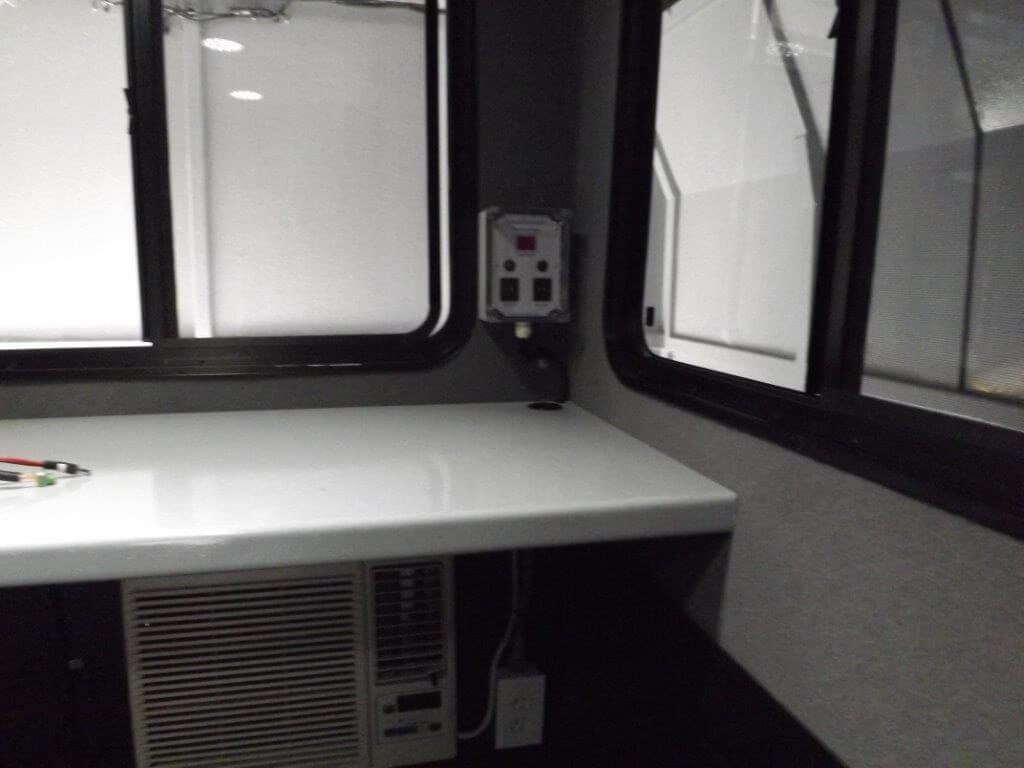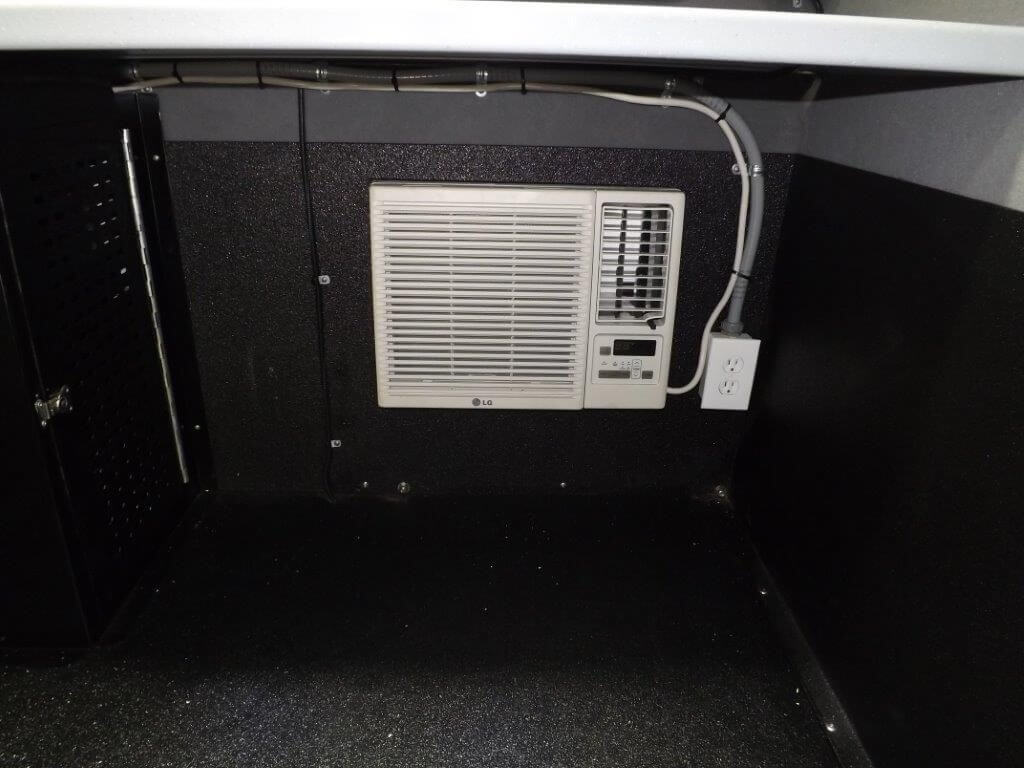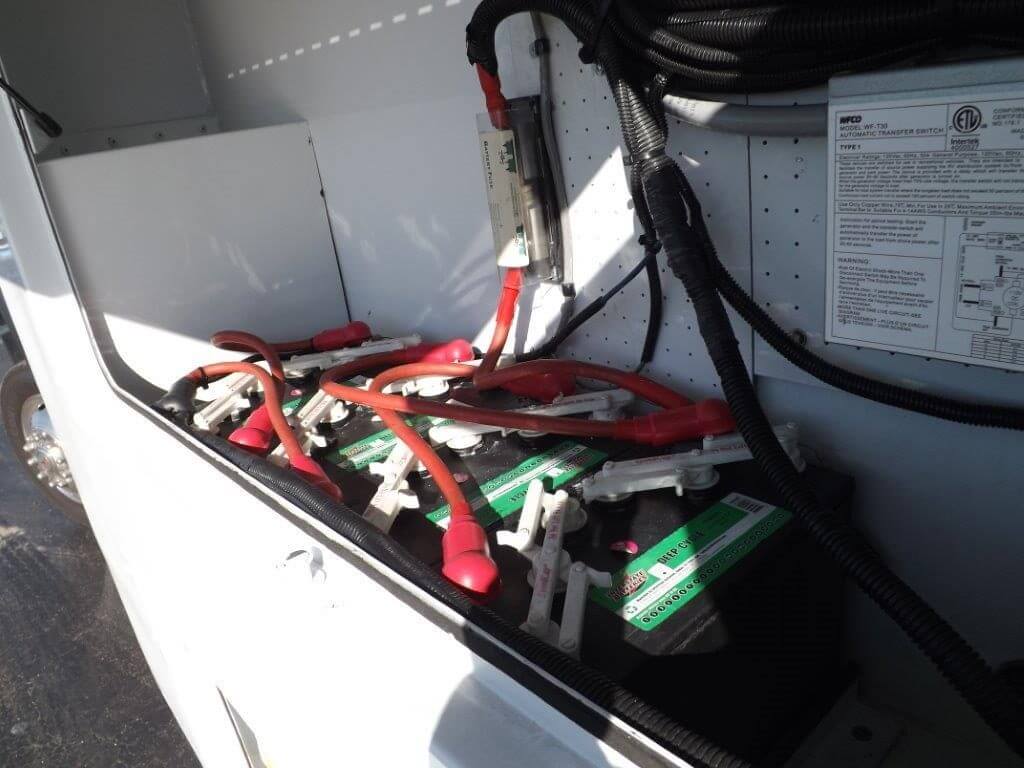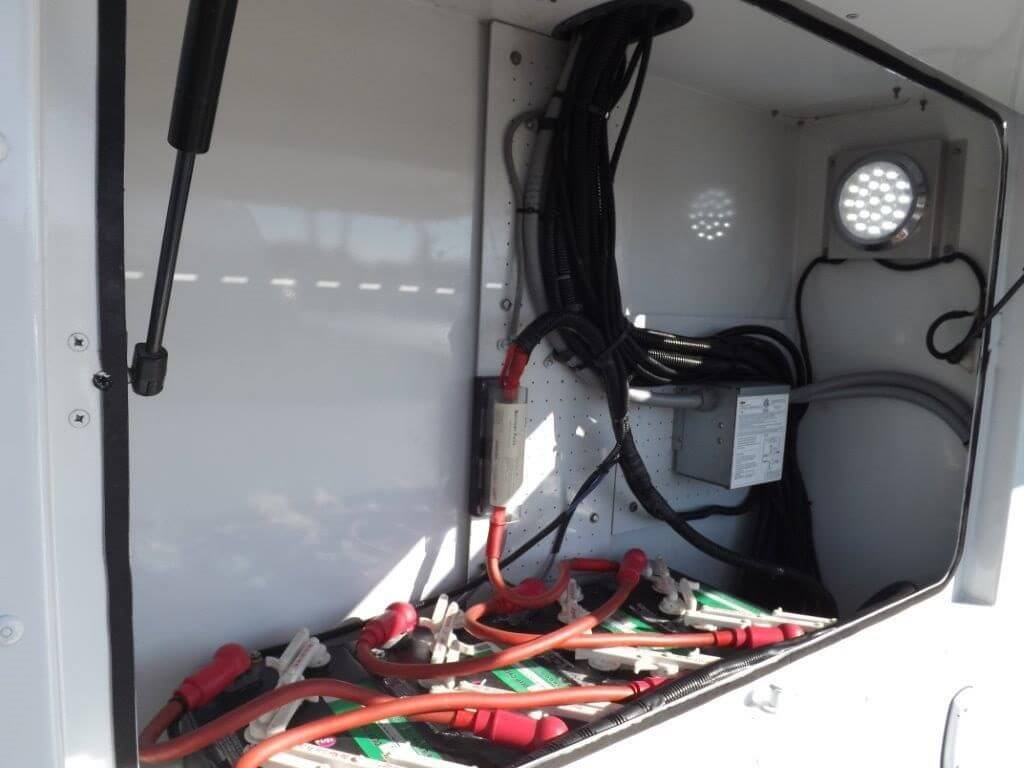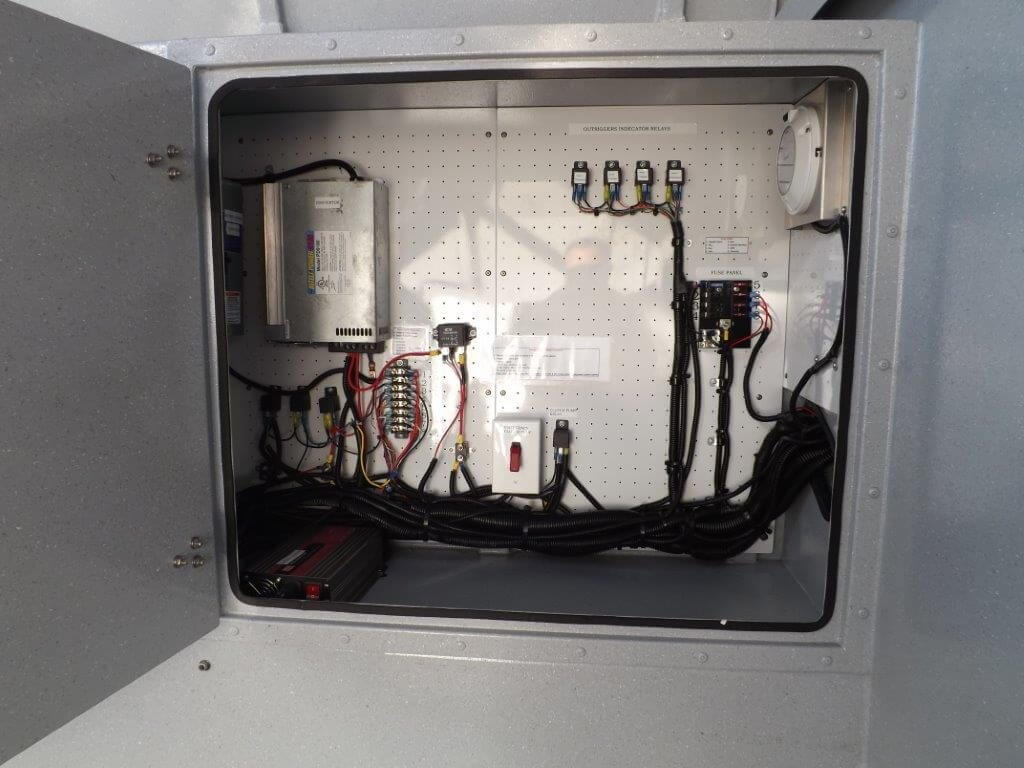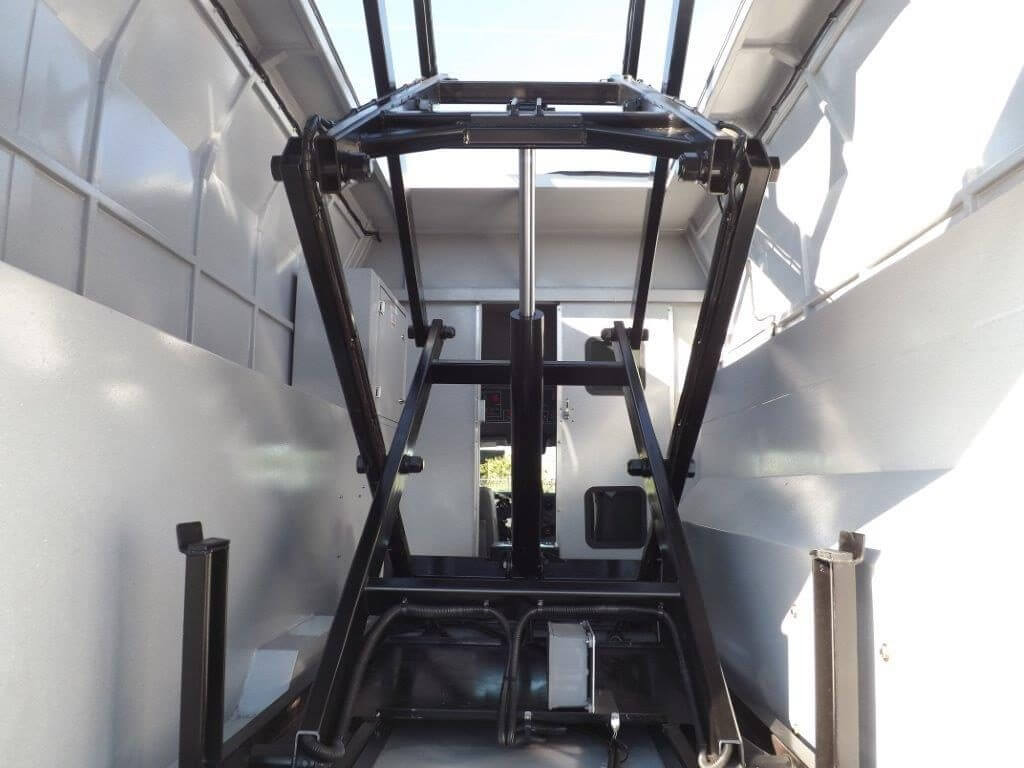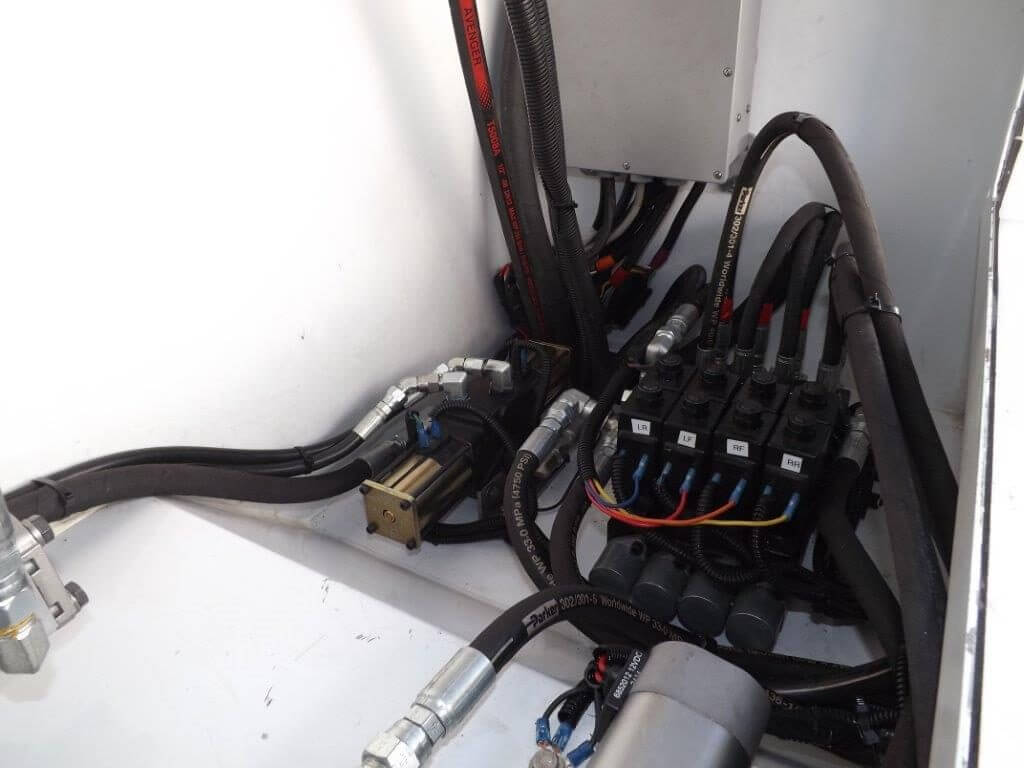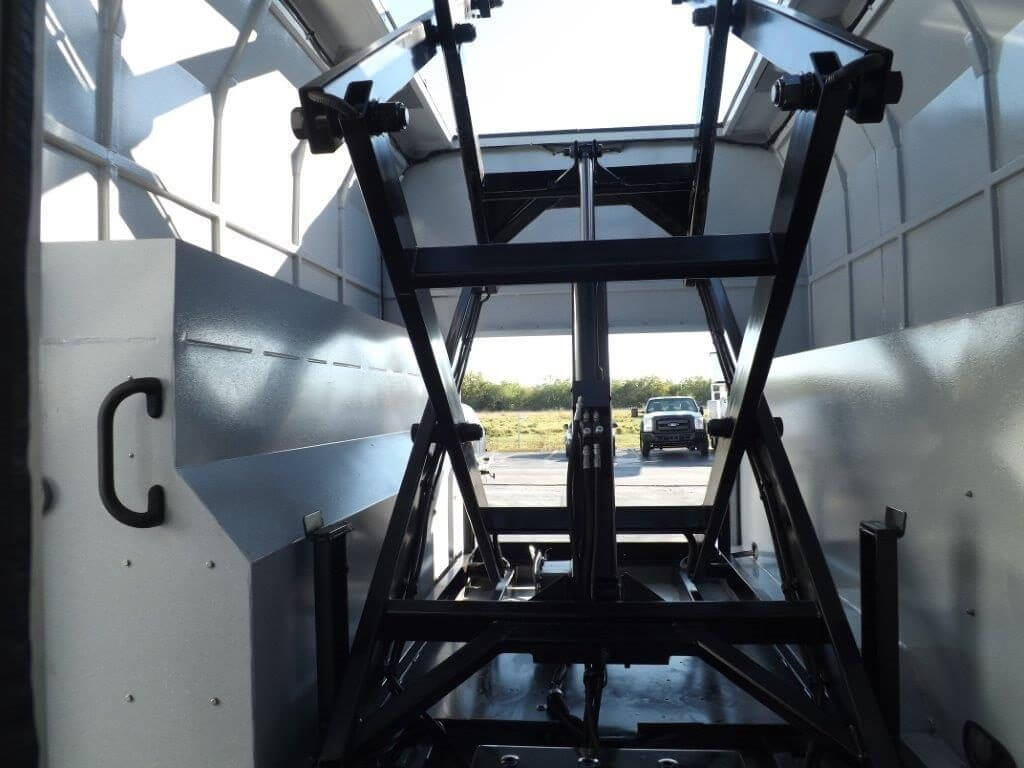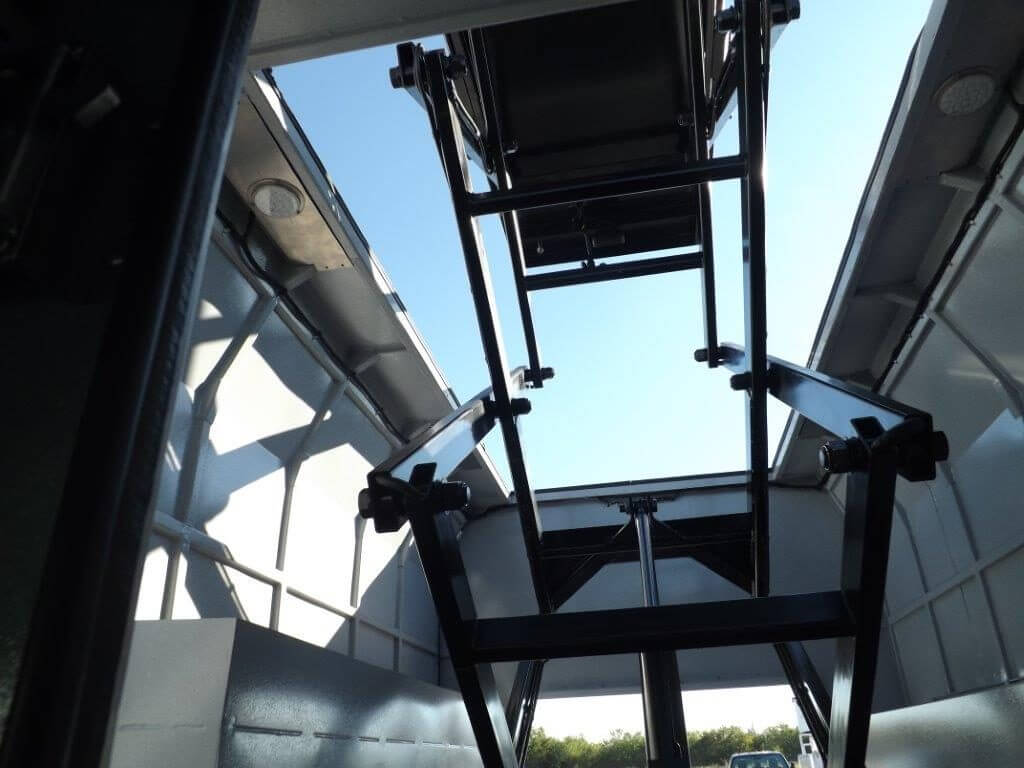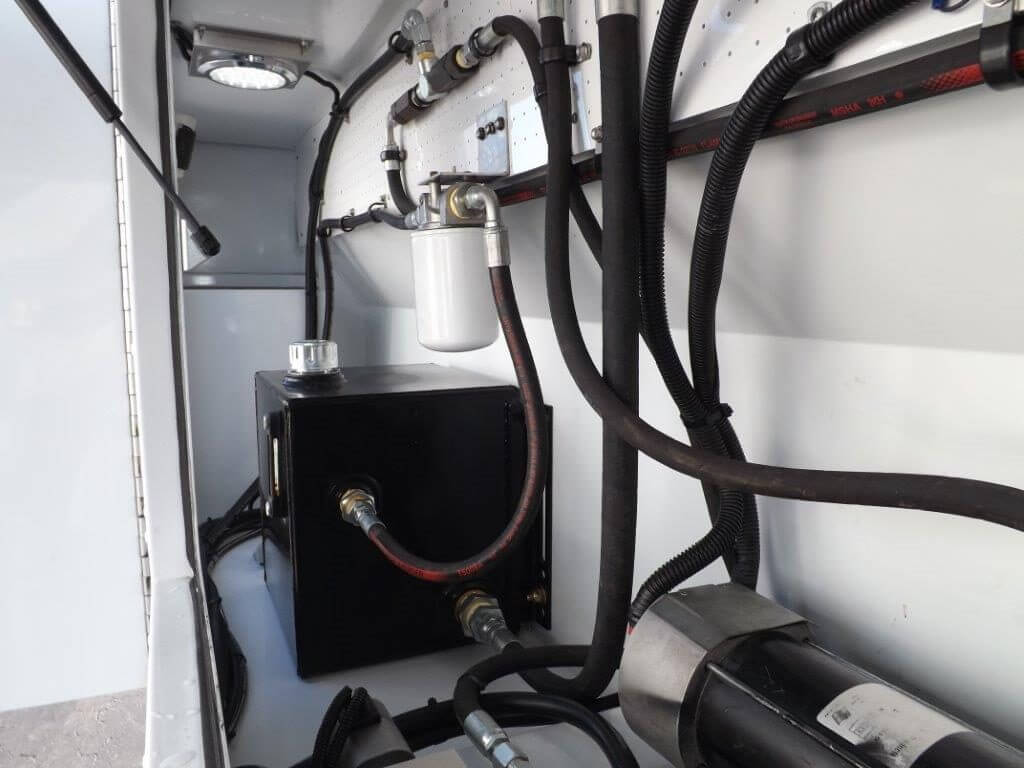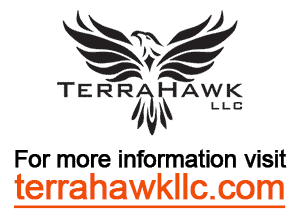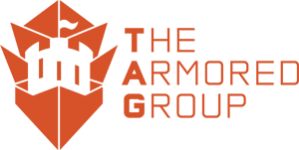TERRAHAWK Mobile Surveillance Tower Lift
Vehicle Details
Construction: 12 ga. Galvaneal Exterior Skins with 1 1/2” Sq. Tubing Wall post on 24” Centers
Floor: 12 ga. Smooth Galvaneal Floor with Wheel Wells
Spray on Non Skid Floor Covering (Rhino Liner Rubberized Coating)
Doors: 60” Double Narrow Pan Formed Rear Doors with Rotary Locks and Paddle Handle
30” Pan Formed Curbside Door with Rotary Lock, Paddle Handle, Piano Hinge, Window and Two Step Stepwell
Wind Deflector: Aerodynamic Wind Deflector with Stand Up Cab
Bulkhead: Bulkhead between Cab and Cargo with Tall Cab Access Door for Access to Capsule without leaving the truck
Bumper: 12” Deep Full Width Grip Strut Step Bumper
Lights: Exterior LED Clearance lights
LED Stop/Tail/Turn Lights Recessed in Rear Apron
(4) LED Interior Dome Lights in Cargo Area with Switch in Cab
(5) LED Dome Lights (1) in each Compartment with Switch in Cab
Mounting: Mounting on Chassis
Flaps: Flaps
Capsule: Capsule with Door, Windows on Four Sides and Desk Area (Bullet Resistant Optional)
Scissor: Scissor Lift in Body mounted to Truck Frame and Capsule (Lift Capsule Approx. 20’)
Controls: Lift Controls in Capsule and in Truck Cab
Leveling: (4) Automatic Leveling Legs (1) at each corner of Body with Controls in Cab
Electronics: Redundant Power Systems for Operation of Hydraulic Equipment (1) Emergency
System (Chassis Engine Driven) & (1) Primary System (Generator/Battery System)
Interlock System - Capsule will not deploy until Truck is Level
Ground Area Surveillance Camera System (3) Camera’s to Cover the Rear & Sides
with Monitor in Cab and in Capsule (Rear Camera also Serves as Back Up Camera)
(6) Scene Lights (2) per Side & (2) on Rear with Switch in Cab and Capsule (3 Way)
Weather Vane under Capsule with Wind Speed Alarm
Battery Management System in Cab and Capsule to Manage Battery Power with Alarm
Compartments: Compartments on both Sides for Access to Electrical and Hydraulic Components
Extinguisher: (2) 2 3/4 lb. Fire Extinguishers (1) in Cab near Drivers Seat and (1) in Capsule
Reflector: Reflector Kit in Cab behind Passenger Seat
First Aid: First Aid Kit in Capsule
Paint: Exterior Painted White
Interior Walls in Cargo Area are Sprayed on Weather Resistant Rubberized Coating
Generator: Generator Mounted in Compartment on S/S Front Corner with Remote Start/Stop in
Cab and Capsule with CO Detector Near Cab
Shore Power: Shore Power Plug (120 volt - 20 Amp) with Transfer Switch
A/C - Heat: A/C - Heat System in Capsule (120 volt) Operates from Generator or Shore Power
Batteries: Battery System is Charged by Generator, Shore Power or Chassis Alternator
Surveillance: Provision for Main Surveillance Camera in Capsule with Monitors and Controllers in both
Cab and Capsule (Actual Camera System to be determined & is not included in Pricing)
Interior Length -13’
Interior Height -90”
Exterior Width -90”
Surveillance tower
Elevated security platform
Eyes in the Sky
Border patrol
Border surveillance
Crowd control

